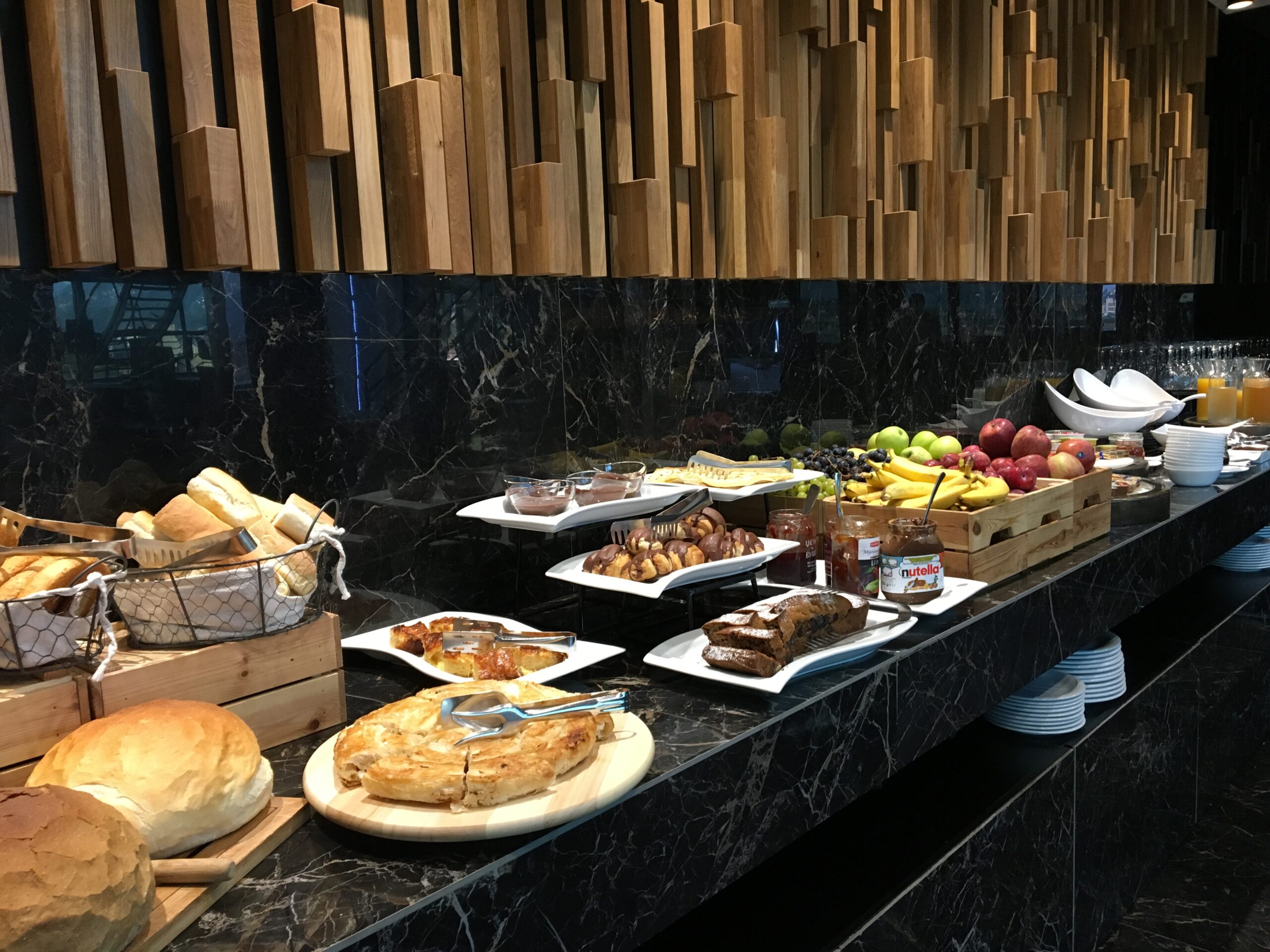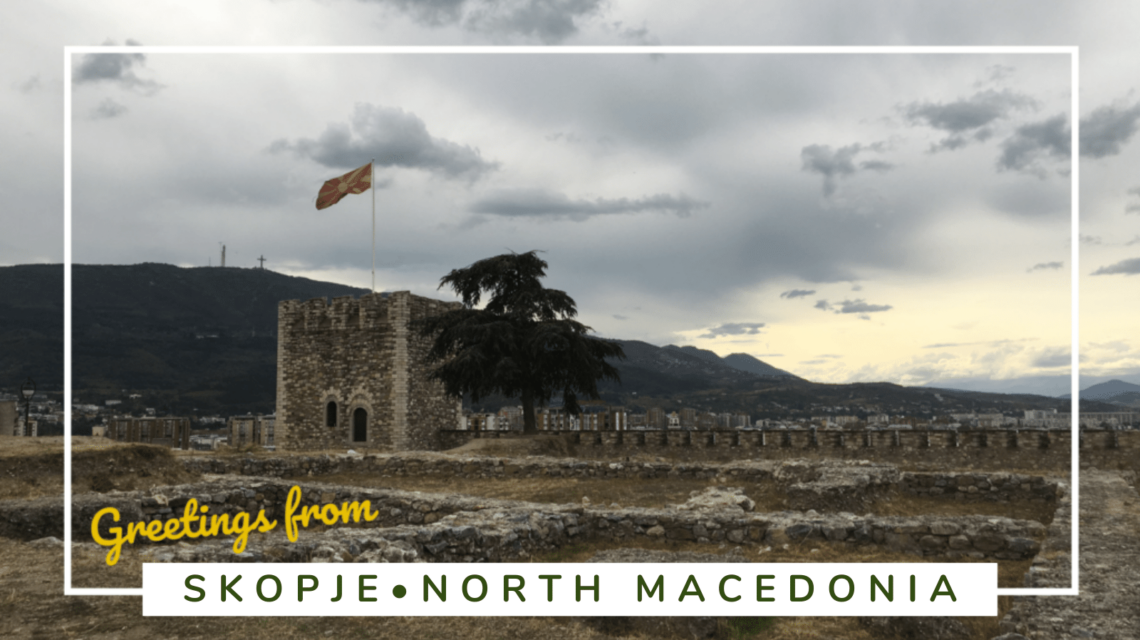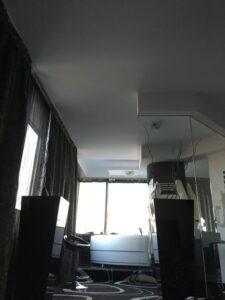8 Must See Attractions In Skopje, North Macedonia april 1, 2022 – Posted in: North Macedonia, Travel – Tags: Attractions, Holiday, North Macedonia, Skopje, Vacation
*The article contains advertising links, read more here: Affiliate Partners*
A guide to attractions in Skopje
If you need tips on what to experience on a holiday in the capital of Northern Macedonia, here is a guide to Must See Attractions in Skopje. Many people choose to visit the city as a short stop on a round trip in the Balkans, but it’s a shame, because there is plenty to see in Skopje.
What to see in Skopje?
There are many interesting sights in Skopje. The city offers museums, lots of history and the most beautiful nature. The city has throughout the ages been populated by many different cultures who have left their mark on the city. In Skopje, the story is everywhere and in a wonderful mix: Ottoman hammams, the Roman Stone Bridge and statues from the project Skopje 2014, which also supplied the city with numerous neoclassical buildings. It is beautiful and completely crazy and gives the city lots of charisma.
If you are only in Skopje on a weekend break, it can be difficult to choose what to see, so here is a list of the sights in Skopje that you will definitely have to visit when you are on holiday in the city. You can see all the other sights in Skopje and plan your own visit here: Visit Skopje
8 Must See sights in Skopje
Stone Bridge
One of the biggest attractions in Skopje is Stone Bridge. In the center you will find the beautiful old stone bridge that crosses the river Vardar. From the center of the bridge you can get a sense on how history has affected Skopje. The bridge also marks the two parts that make up the city: On one side is Macedonia Square and the new and western part of town with all the large statues. On the other side of the river lies the Old Town with the oriental bazaar, a piece of the past.
Stone Bridge is over 1500 years old, originally built by the Romans and rebuilt under Ottoman rule. The bridge has survived several earthquakes and is today beautifully restored. In the evening there is lots of people on the bridge.
Read more here: Stone Bridge
What’s up with alle the statues?
On both sides of Stone Bridge and especially around Macedonia Square you will find countless statues. The statues are part of the state-funded project Skopje 2014, which aimed to promote a Macedonian identity and show an unbroken historical line from antiquity to the present day.
The biggest and most beautiful statues are of Alexander the Great and his father, Philip II. Due to the dispute with Greece over Alexander’s affiliation, the statue is called “Warrior on a horse”, but it looks suspiciously similar to Alexander on his famous horse, Bukephalos. On the two bridges south of Stone Bridge, many statues of great Macedonian thinkers and cultural figures through the ages are also displayed.
Read more here: Skopje 2014
Mother Theresa
Everywhere you go in the new district, you will also come across the golden plaques with quotes by Mother Teresa. Born in Skopje in 1910, she already received a call from God as a child. 18 years old, she traveled to Ireland to become a nun, until she received another call and set up the Missionaries of Charity in India, a work for which she received the Nobel Peace Prize in 1979.
The greatest experience at the Memorial House of Mother Teresa is not all the photos of the famous nun photographed with world leaders. Many of Mother Teresa’s letters are exhibited and through the fine handwriting and the perfect English, one gets the impression of a truly intelligent and magnificent human being.
Read more here: Memorial House of Mother Teresa
City Museum of Skopje
A little further down the street is the city museum in the former train station. When arriving, you’ll probably notice the clock that has stopped forever at 5:17. You check your watch before your gaze falls on the wall that stands so strangely torn and unfinished. The explanation can be found in the exhibition at the museum about the earthquake in Skopje in 1963.
On the morning of July 26, at seventeen minutes past five, the city’s residents were awakened by an earthquake that destroyed 80% of the city. Skopje, which used to have a reputation for being one of the world’s most beautiful cities, was now in ruins, and over 200,000 people had no longer a roof over their heads. The world community quickly came to the rescue, and many of the housing blocks you now pass in the city center are a result of this reconstruction of Skopje.
In the basement you will find an exhibition about Skopje’s early history. From Neolithic times over the Romans to the Ottoman Empire, unique finds have been made, with many objects that are 7,000-8,000 years old.
Read more here: City Museum of Skopje
The Old Bazaar
That Skopje has been a trading center since ancient times can also be seen in the Old Town on the other side of Stone Bridge. Here the streets are narrow and cobbled, and in the bazaar, which is the second largest Ottoman bazaar next to the one in Istanbul, you can make a good bargain. There is one whimsical shop after another where you will find everything from jewelers with impressive filigree rings and shoe shops with goatskin slippers. Many of the stores sell beautiful wedding dresses with skirts of hundreds of tulle layers.
In the bazaar there are lots of small cafes, bakeries, candy shops, bars and restaurants. Sit down at one of the kafanas where you can have a cup of coffee and watch all the different people passing by. To the sound of the prayer call from one of the district’s many mosques, it also quickly becomes clear that this is the old Ottoman quarter.
Read more here: The Old Bazaar
Daut Pasha Hamam and Cifte Hamam
Two of the most beautiful remains of the Ottoman rule in Skopje can be found in the old bathhouses, Daut Pasha Hamam and Cifte Hamam. Built in 1446, Daut Pasha Hamam spreads over 900m² and the 13 domes still telss a story about great wealth. In Turkish, ‘cift’ means the number two, and Cifte Hamam from the middle of the 16th century, also consisted of a divided bathhouse with a section for men and one for women. Today, the bathhouses house the National Gallery of Macedonia, where you can see changing exhibitions – or just enjoy the beautiful, old buildings.
Read more here: National Gallery of Macedonia
Fortress Kale
The word ‘kale’ (pronounced ‘ kah -lay’) also stems from Turkish. Kale means ‘fort’, but long before the Ottomans came to the city there was a fortification. Over time the fort has occupied by vairous rulers of the city, including the Norman Vikings. From 1081-1988 and again in 1097 they occupied the city, and at the south-eastern tower traces of their arms production as well as a longbow have been found.
If you walk around the back of the fortress wall, the part facing the bazaar, yellow sandstones give evidence that some of the building material also came from the ancient Roman city. The fort as it stands today is the result of the restoration and expansion of the fort in the Ottoman period.
From the fort there is a fantastic view over the river Vardar and of Skopje, and along the city wall a nice path has been established. However, the fort is only slowly being excavated and there are no written guides on the site where you can read about Kale. It is therefore recommended that you familiarize yourself with the history before visiting the sight.
Read more here: Fortress Kale – click on “History and culture” for more information
Millennium Cross
On Mount Vodor, the impressive, luminous cross towers over the city and helps you find your way around Skopje. To get up to the Millennium Cross you can take bus no. 25 and then the cable car. The cable car costs 100 denars about €2 – and also bring cash for the bus.
It’s also possible to hike all the way up the mountain. From the center of town it takes a couple of hours to walk up to the start of the cable car. The ride only goes uphill and you need to be in good shape. But on a cool day, the trip up there is worth it! The view over Skopje and the surrounding mountains is breathtaking, and the air is fresh. At the Millennium Cross, there is nothing to buy, so bring a packed lunch and enjoy the view.
If you want to explore the beautiful nature around Skopje, the area also offers many hiking trails. In the forests, there is the opportunity to spot the Moorish tortoise, as we did.
Read more here: Millennium Cross Station – here you can see a timetable for the cable car.
Find a great hotel in Skopje
Whether you are going on holiday in Skopje or just want to visit the city on a short weekend break, there are many lovely hotels in the city. In general, it is cheap to live in Skopje, and even a tight budget will get you far. If you want to pamper yourself, you can also get a lot of luxury for your money in Skopje.
With those words comes our recommendation for a really good hotel in Skopje that can be booked directly through Booking.com. See more hotels by performing your own search here:
A recommendation: Hotel Arka
We stayed right in the middle of the old bazaar at the five star Hotel Arka. In addition to rooms and suites, the luxury hotel also has three themed rooms: one that is kept completely in white with a bathtub, another that is black and with a whirlpool and a third in classic decor, where you can take a bath overlooking the city’s roofs. As you can see on the photo, we of course chose the one with the bath in the middle of the living room and the view over the city!
The breakfast buffet is completely sumptuous and offers Macedonian specialties and freshly made omelette. On the roof terrace you will find a pool bar that is open 24 hours a day as well as the most amazing view of the city and the old bazaar. From Hotel Arka, it is only a short walk to the restaurants of the Bazaar and Macedonia Square.
Read more: Hotel Arka
See all the great hotels in Skopje here on Booking.com!

We have to show you the biggest breakfast buffet we’ve ever seen… well, this is just some of it!
How do you get to Skopje?
WizzAir is your #1 choice when flying uot to Skopje. From Skopje Airport, you can take a shuttle bus to the city during the day, and it costs 160 denars (approximately €2,5). In front of the airport there are also taxis with fixed prices. 1500 denar it costs, about €25 – and don’t save your money going in a pirate taxi. The official taxis has a sign on the roof saying ‘Park’ .
When you need to get back to the airport, the bus leaves from the train station at the eastern part of town. Buy a ticket at the train station and stand in front of ‘East Entrance’. The bus does not run in the evening, see the bus schedule here.


